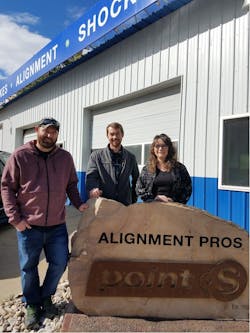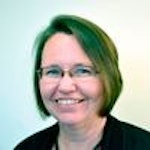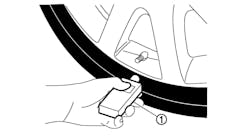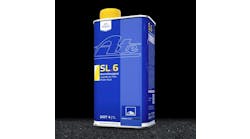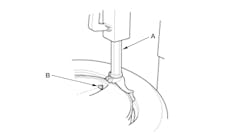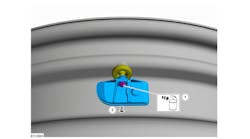How important is alignment service to Matt Petersen and Kent Coleman? For Petersen, it’s what sets Alignment Pros–Point S apart from competitors in Gillette, Wyo. For Coleman, it is the service that drives the most profits at his six Salt Lake City area Big O Tires stores.
Alignment expertise
Alignment Pros–Point S provides complete automotive repair services as well as sales and service for passenger, light truck, agricultural, ATV, trailer and other specialty tires. But the store’s name tells the marketplace that the Petersen family has staked its livelihood on being the best at solving alignment-related issues. Alignments and related front-end work represent about 40% of mechanical revenues. Overall, about half of the store’s business is mechanical work and half is tire sales and service.
Petersen’s father, Dick, established Alignment Pros Inc. in 1990. He had performed alignments out of a work truck on service calls to local mines for many years, recalls his son. “He had done alignments on bigger, heavier equipment. When he opened the store he wanted to specialize in alignments and make that the main focus of what we do.”
The elder Petersen also wanted to focus on service. When Alignment Pros opened in 1990, the local economy was booming from the coal and oil industries. “There were a lot of shops that were super busy and pumping work in and out. I think that niche of really taking care of customers wasn’t quite there. I know he wanted to fill that niche.”
The store continued to specialize in alignments after the founder’s death in 2011, and Petersen became a co-owner with his mother, Kalina. “She’s our leader here in the shop. We’re all kind of lost puppies without her. She’s definitely the one that keeps us all together. She’s a pretty amazing lady,” says Petersen.
About a year later, longtime employee Matt Veal, an alignment technician, became a partner. “He was one my dad originally trained,” says Petersen. “We brought Matt on as a business partner, and he has truly helped us to grow.”
Today the store’s car count averages 450 to 500 a month. About 80% of vehicles are light trucks. Three of the 10 employees are alignment techs. “One of our techs has over 18 years on the alignment rack; and I have 15 years. It’s something we take a lot of pride in,” says Petersen.
Know the driving style
Alignment Pros aims for five to seven alignments a day. “We try to focus more on quality over quantity,” says Petersen. “Instead of trying to pump out a lot of alignments, we focus on the customer’s driving style, what kind of problems they are having with wear and being able to understand the numbers and know where to adjust to make sure their issue is resolved.”
Customers are asked to indicate vibration and other concerns on a diagnostic check sheet. “The check sheet been working very well in finding a customer’s underlying issue,” says Petersen.
An alignment can take care of tire problems created by a customer’s driving style. “We see a lot of cars that have an issue with inside tire wear,” says Petersen. “When you put the tire on the alignment machine, sometimes the readings will be within the vehicle’s specifications. But when the machine calls for a negative amount of camber, a lot of times those tires will still wear. If the customer is on the highway a lot and not canyon roads where they need that additional negative camber, we’ll adjust the specs out a little to try to resolve the inside wear for them.”
Understand the numbers
“When my dad trained all of us on alignments years ago, we were trained on understanding the numbers more than just what you need to do to make the alignment in spec,” says Petersen. Finding a customer’s underlying issue and resolving it requires understanding the manufacturer’s range of alignment specifications versus the preferred settings.
“A lot of these new machines have made it to where techs can align a vehicle without a lot of extensive knowledge about alignments,” says Petersen. “If the customer is having an issue after the alignment, that’s where the technician really needs to understand the numbers.”
Petersen installed the latest HawkEye Elite aligner from Hunter Engineering Co., which resets a vehicle’s safety features after a mechanical alignment, in August 2018.
Processes for all vehicles
Kent Coleman’s six Big O Tires stores are expected to align 20% of vehicles that enter the bays. To reach that target, employees follow specific processes, starting with a dedicated alignment technician.
“The tech is basically on call at all times,” says Coleman. “If a vehicle comes in for an alignment check, they are on it that second.”
Coleman’s blueprint for sales includes a free alignment check for every car that comes in for service, even tire rotations. The free checks are the most effective tool for selling alignments. “For customers who need alignments, the conversion rate is about 90%,” says Coleman. The sales conversion rate for all vehicles that receive an alignment check is 75%.
His employees also use the report the aligner generates which shows a vehicle’s alignment readings as a selling tool.
Coleman recommends not doing other mechanical work on the alignment rack and using quality equipment. “Generally the better equipment is faster. If you are lining up alignment checks, you want to do them as quickly as possible, and that means you need good equipment.”
Coleman has installed the latest generation Hunter aligner, the HawkEye Elite, in his stores. But equipment alone will not boost sales, he cautions.
“The equipment and process go in tandem. You have to have the process and the equipment together. That’s how you succeed in alignment sales.”
The processes for increasing alignment sales are practiced at all of Coleman’s six Big O Tires stores. “For me, I believe alignment sales are the number one contributor to a shop’s profitability,” he says.
There are stores in Salt Lake City, Murray, West Valley and Bountiful and two stores in Ogden. Most have seven bays and one dedicated alignment tech. The Salt Lake City store has 18 bays, two alignment racks and two dedicated alignment techs.
Alignment packages sold in one-, three- and five-year increments are popular. A customer gets up to four alignments per year. “Most people are not going to buy three alignments in a three-year period. They would probably buy one. So you can get triple the money,” Coleman says. ■
